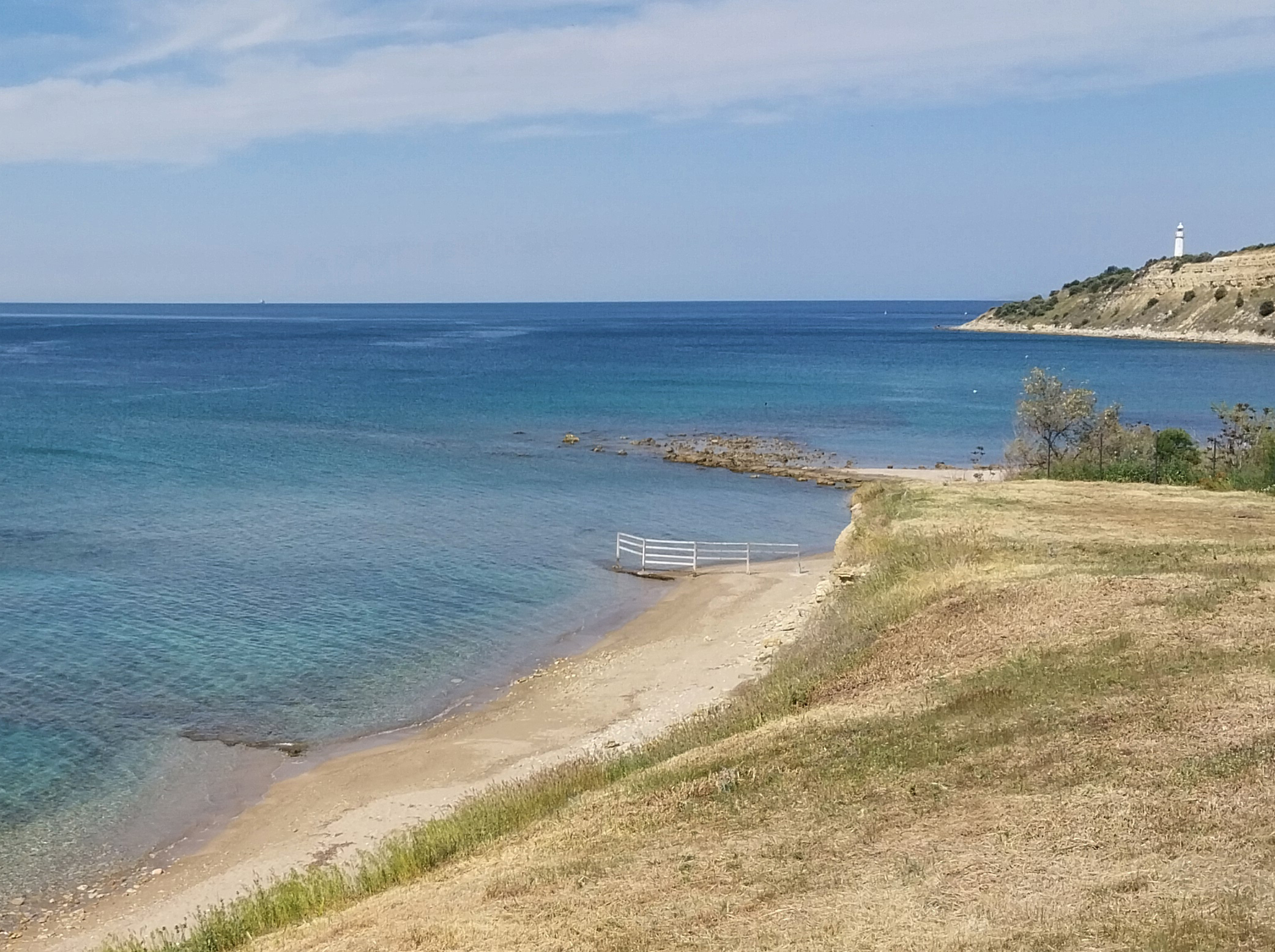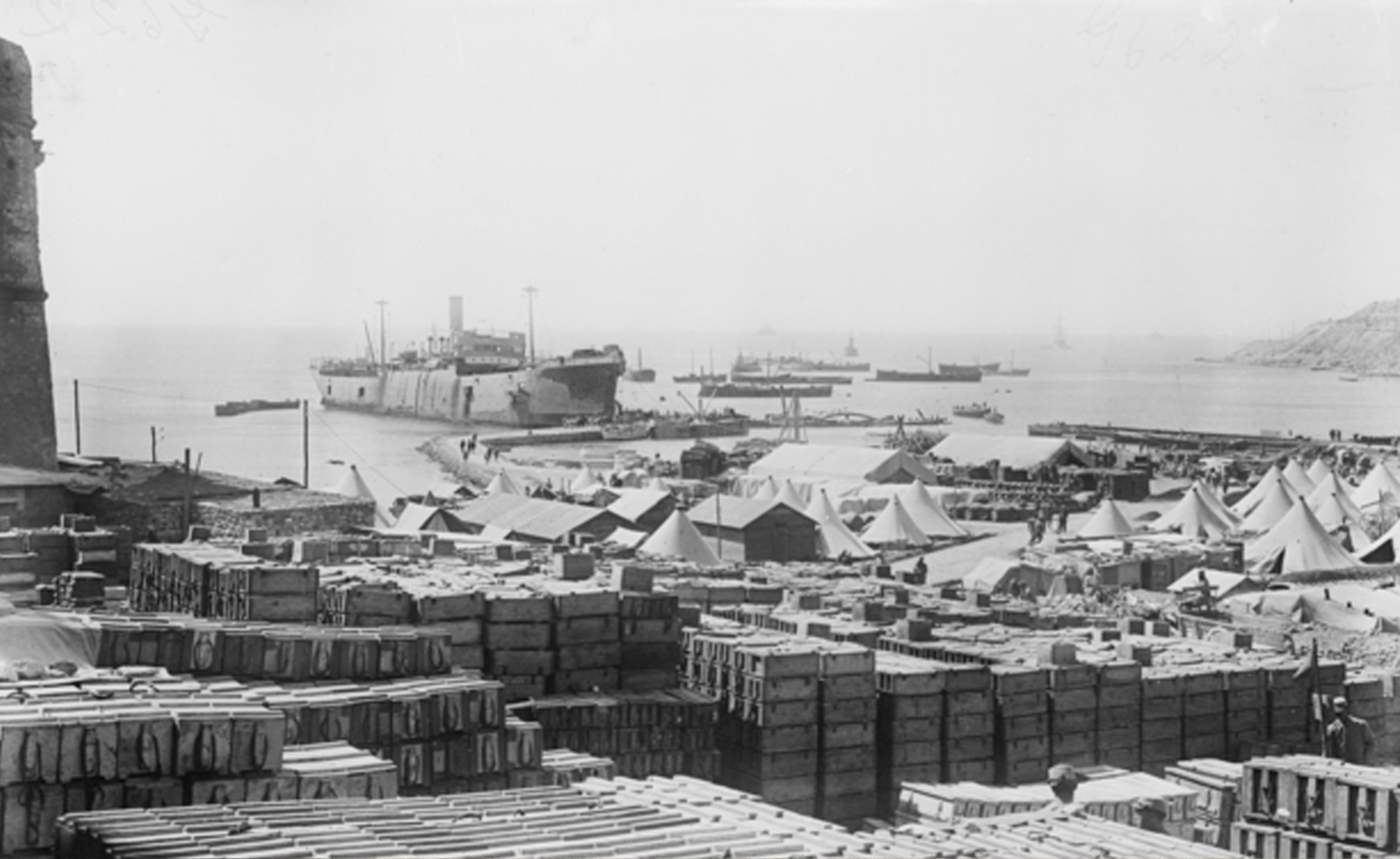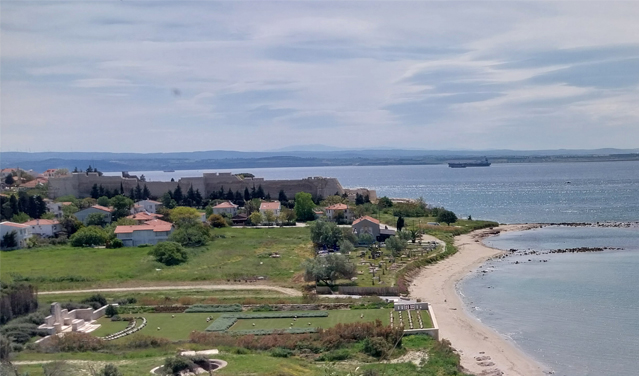Seddülbahir
Ertuğrul Koyu (V Sahili)
Çanakkale Muharebeleri'nin Seddülbahir cephesindeki en önemli ve belki de en bilinen çıkarma noktası olan Ertuğrul Koyu, Gelibolu Yarımadası'nın güney ucunda, Seddülbahir Köyü'nde yer alır. Yaklaşık olarak orta noktasının koordinatları 40°02'36"N 26°11'01"E'dir. 25 Nisan 1915 tarihinde İtilaf Devletleri'ne ait işgal kuvvetlerinin Seddülbahir Bölgesinde çıkarma yaptıkları 5 noktadan biridir. (Diğerleri Morto Koyu, Tekke Koyu, İkiz Koyu ve Pınariçi Koyu'dur.)
Ertuğrul Koyu, işgal kuvvetleri tarafından V Beach (V Sahili) olarak adlandırılmıştır.
Cape Helles
Ertugrul Cove (V Beach)
Ertuğrul Cove, one of the most important and perhaps the best-known landing sites on the Seddülbahir front of the Gallipoli Campaign, is located at the southern tip of the Gallipoli Peninsula, in the village of Seddülbahir. Its approximate central coordinates are 40°02'36"N 26°11'01"E. On April 25, 1915, it was one of the five landing points of the Allied invasion forces in the Seddülbahir sector (the others being Morto Bay, Tekke Bay, İkiz Bay, and Pınariçi Bay).
Ertuğrul Bay was designated by the invading forces as V Beach.
İlk sıradaki tarihi fotoğrafta River Clyde adlı kömür gemisi görülmektedir. Bu gemi, asker taşımak ve karaya çıkarmak için sonradan modifiye edilmiş sivil bir gemidir. Bazı araştırmacılara göre, zararsız gibi görünen sivil bir gemi aracılığıyla karaya asker çıkarılması, aynı coğrafyada geçen Truva Savaşları sırasında kullanılan Truva Atı'nı anımsatmaktadır.
River Clyde gemisinden Ertuğrul Koyu'na çıkış, işgal kuvvetleri açısından kolay olmamış, çok sayıda asker kaybetmelerine neden olmuştur.
Geminin baştankara yapıldığı bölgedeki iskele kalıntısı günümüzde (2025) halen görülebilmektedir. Tarihi fotoğraf (2015), günümüz fotoğrafına göre daha geriden çekilmiştir. Sonradan restore edilen ve hali hazırda ziyarete açık olan Seddülbahir Kalesi'nin ziyarete kapalı bahçesi, aynı noktadan fotoğraf çekilmesine engel olmaktadır.
In the first historical photograph, the collier ship River Clyde can be seen. This civilian vessel was later modified to transport and land troops. According to some researchers, the use of an apparently harmless civilian ship to disembark soldiers evokes memories of the Trojan Horse used during the Trojan War, which took place in the same region.
The landing from the River Clyde at Ertuğrul Bay was far from easy for the invading forces and resulted in heavy casualties.
The remains of the pier where the ship was beached can still be seen today (2025). The historical photograph (1915) was taken from a point further back compared to the present-day photo. The restricted garden of Seddülbahir Fortress—later restored and now open to visitors—prevents photographs from being taken from exactly the same spot.


River Clyde gemisinin 1915 tarihli bir başka görüntüsü. Fotoğrafın en solunda, Seddülbahir Kalesi'nin kulelerinden biri görünmektedir. Bu bölgedeki ağaçlar, iskele kalıntısının görüntüsünü kapatmaktadır.
Another view of the River Clyde from 1915. On the far left of the photograph, one of the towers of Sedd-el-Bahr Fortress can be seen. The trees in this area obscure the view of the pier remains.


Bu fotoğraflarda koyun kabaca batıdan doğuya doğru genel bir görünümü yer almaktadır. İlki 1915 yılına ait olan iki fotoğraf arasındaki fark, geçen yaklaşık 110 senede koyda meydana gelen coğrafi değişimleri de ortaya koymaktadır.
These photographs present a general view of the bay from roughly west to east. The difference between the two images, the first of which dates back to 1915, also reveals the geographical changes that have occurred in the bay over the past 110 years.


Ertuğrul koyunda yer alan ve "V Beach Cemetery" ("V Sahili Mezarlığı") olarak adlandırılan yabancı (İngiliz) mezarlığı. Bölgedeki diğer yabancı mezarlıkları gibi son derece düzenli ve bakımlı durumdadır. Tarihi fotoğraf 1920'li yıllara aittir.
The foreign (British) cemetery at Ertuğrul Bay, known as V Beach Cemetery. Like the other foreign cemeteries in the region, it is exceptionally well-maintained and orderly. The historical photograph dates to the 1920s.

